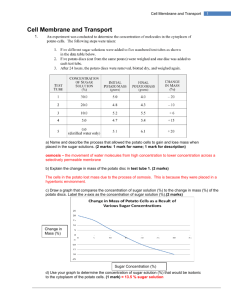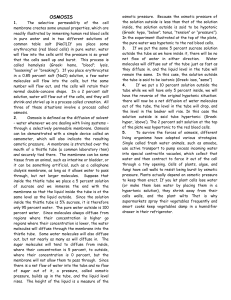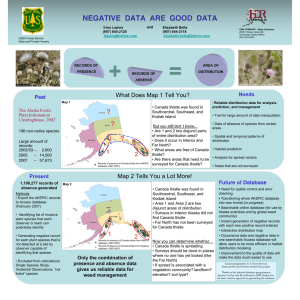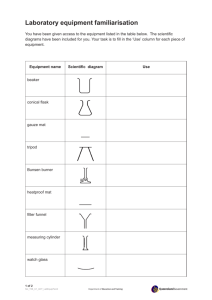BIOLOGY 12: CELL MEMBRANE TRANSPORT REVIEW
advertisement
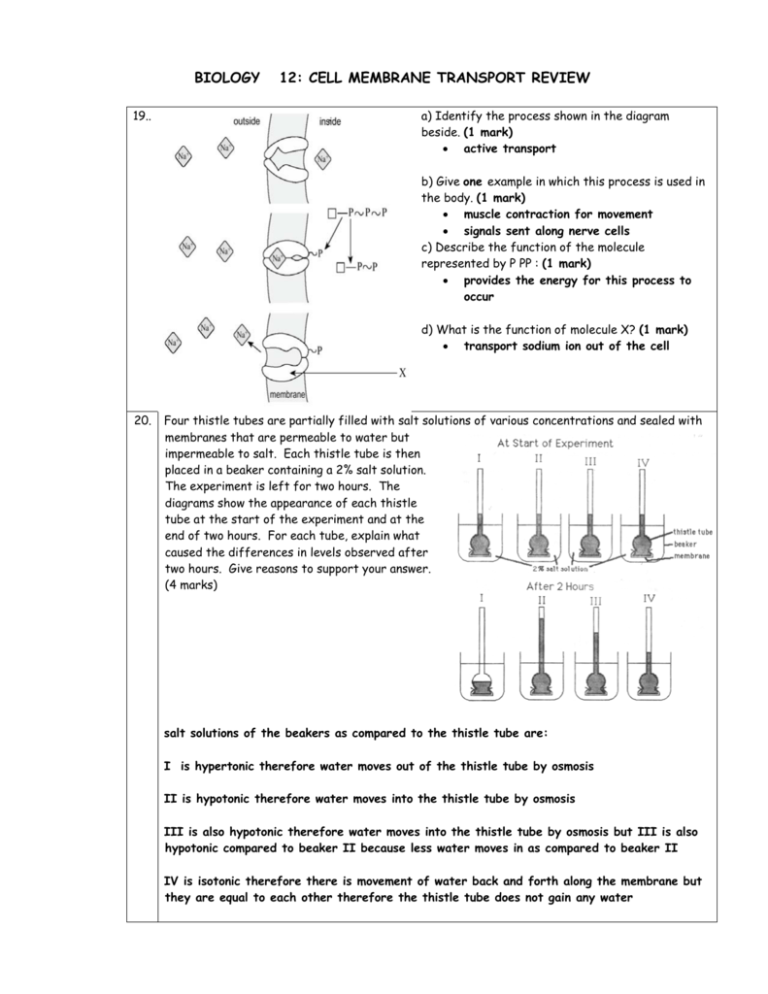
BIOLOGY 19.. 12: CELL MEMBRANE TRANSPORT REVIEW a) Identify the process shown in the diagram beside. (1 mark) • active transport b) Give one example in which this process is used in the body. (1 mark) • muscle contraction for movement • signals sent along nerve cells c) Describe the function of the molecule represented by P PP : (1 mark) • provides the energy for this process to occur d) What is the function of molecule X? (1 mark) • transport sodium ion out of the cell 20. Four thistle tubes are partially filled with salt solutions of various concentrations and sealed with membranes that are permeable to water but impermeable to salt. Each thistle tube is then placed in a beaker containing a 2% salt solution. The experiment is left for two hours. The diagrams show the appearance of each thistle tube at the start of the experiment and at the end of two hours. For each tube, explain what caused the differences in levels observed after two hours. Give reasons to support your answer. (4 marks) salt solutions of the beakers as compared to the thistle tube are: I is hypertonic therefore water moves out of the thistle tube by osmosis II is hypotonic therefore water moves into the thistle tube by osmosis III is also hypotonic therefore water moves into the thistle tube by osmosis but III is also hypotonic compared to beaker II because less water moves in as compared to beaker II IV is isotonic therefore there is movement of water back and forth along the membrane but they are equal to each other therefore the thistle tube does not gain any water 21. Two identical red blood cell samples were prepared for an experiment. The samples were placed in two different solutions and the percent change in mass was recorded and graphed over an eight hour period as shown below. a) Account for the change in mass of the cells in Solution A during the first four hours. (2 marks) • Solution is hypotonic as compared to the cell therefore water moves into the cell by osmosis (from high concentration of water to low concentration of water) b) What happened to the cells in Solution A after four hours? (1 mark) • The cell bursts (cell lysis) c) Give one reason for the results obtained from the cells placed in Solution B between three and eight hours. (1 mark) • after 3 hours the cell is isotonic (concentrations of solute and water are equal) to solution B
